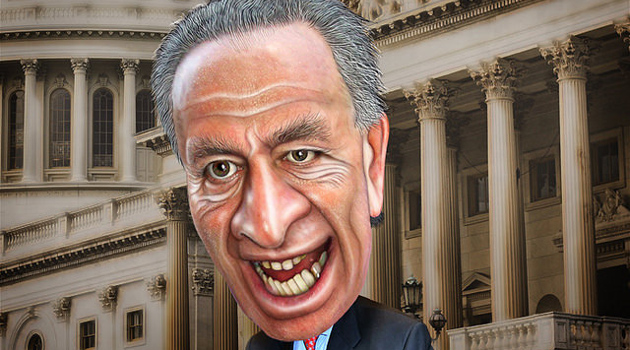This article originally appeared on The Daily Caller on January 4, 2017.
Liberal New Yorker and new Senate Minority Leader Chuck Schumer wants to work with President-elect Trump on certain issues, according to a recent speech. The two go way back, which is cause for concern. One of the issues he singled out as potential common ground is “closing” the so-called “carried interest loophole.”
At the heart of the question over how to tax carried interest—the share of profit from an investment that goes to a fund or investment manager—is a long-running debate between the left and the right over how to treat capital earnings in general.
Economists on the right understand that taxes on capital gains are a form of double taxation because the size of the return has already been reduced by corporate income taxes. The same is true for dividend payments. That’s why the correct tax rate for both is zero.
Moreover, double taxing capital has a very negative impact on the economy because capital is the fuel of a free market system. Savings and investments represent deferred consumption, as they are what we set aside today so that we may produce and consume more tomorrow. Because it compounds over time, small differences in growth eventually lead to huge differences in the standard of living.
The left doesn’t see it that way. They frame it as a simple question of fairness, arguing that capital income should be treated the same as labor income. What they ignore is the unseen reduction in capital income that has already occurred due to corporate taxes, the fact that investments represent a risk as they are not guaranteed a return at all, and that such risk-taking needs to be encouraged to grow the economy.
So where does carried interest come into all this?
Often times investments are undertaken through partnerships, where one partner brings the money to the table while the other brings the knowledge or expertise needed to put it to productive use. A portion of the capital gain is paid to the knowledgeable party—the manager of the fund—rewarding them based on the size of the return. This is known as the carried interest.
Both the investor and the manager are paid out of the same investment return. They are also both risking that there will not be a return at all. It thus makes sense, and helps reduce double taxation, that they both be taxed at the same rate—the capital gains rate. But the left calls this a “loophole” and insists carried interest be taxed as if it is labor income. Not only would this exacerbate double taxation, but it would also serve as the camel’s nose under the tent, providing a means for the left to eventually expand the destructive taxation of all capital in hopes of securing more “revenue” for pet spending projects.
That’s why a tax-and-spend liberal like Chuck Schumer is eager to work with a President Trump on the matter. And the obscurity of the issue, along with the ease with which it can be demagogued, makes that prospect frighteningly more likely.
The populist surge that delivered Donald Trump to the White House was fueled by anger at cronyism and special treatment for elites, but also many Americans’ despair over their economic prospects. That is why the President-elect must remember that capital is the lifeblood of the economy. Punishing those who direct investments to where they can provide the most economic value by double taxing earnings might provide a rhetorical populist victory, but it would be a loss for the economy as a whole and thus undermine his efforts to expand economic opportunities for those who need them most.
———
Image credit: DonkeyHotey | CC BY 2.0.

